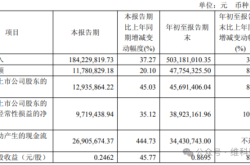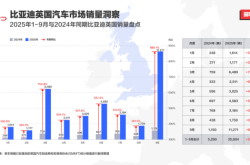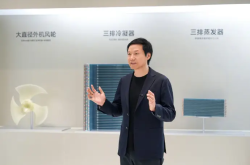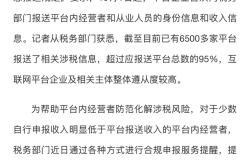AI Large Models Propel Humanoid Robot Commercialization
![]() 03/27 2025
03/27 2025
![]() 590
590
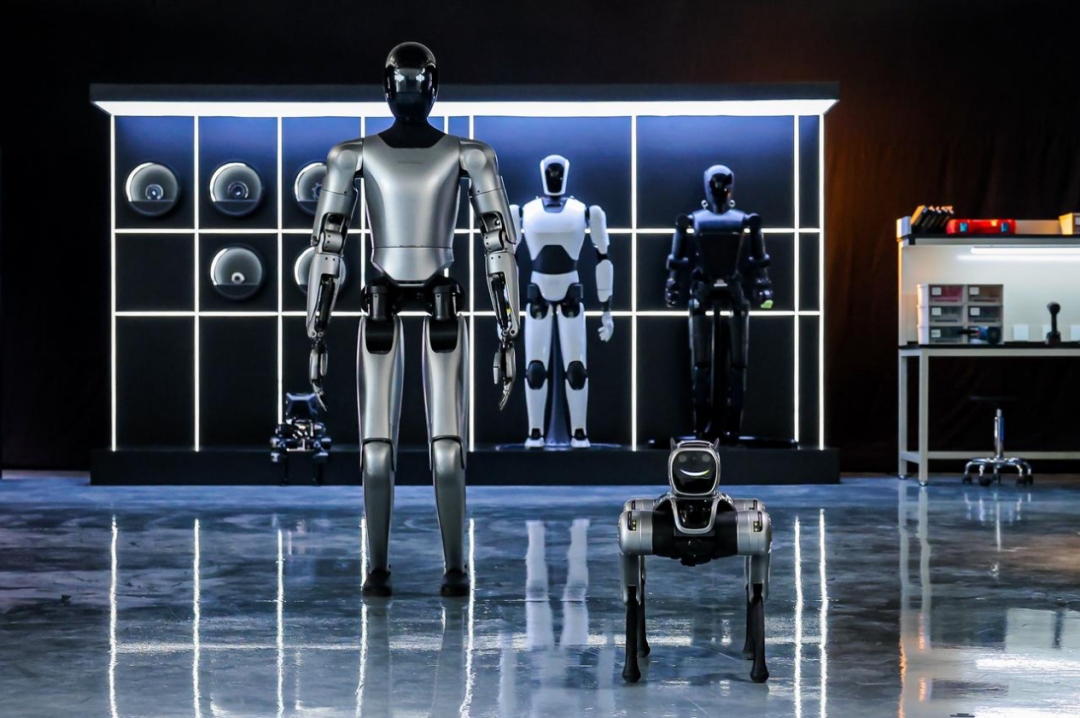
When will the commercialization of humanoid robots experience a large-scale explosion?
/
Produced by | Business Show
On January 28, 2025, Hangzhou Unitree Robotics' robots made their debut on CCTV's Spring Festival Gala in Zhang Yimou's innovative fusion dance "Yang BOT," showcasing their remarkable performance to a national audience.
Prior to this, Unitree Robotics had already secured a prominent position in the market due to its expertise in quadruped robots, boasting a global market share exceeding 60% in 2024.
This year, the humanoid robot sector continues to witness a surge of enthusiasm, with numerous enterprises joining the fray alongside Unitree. Zhiyuan's products have entered the industrial training phase, while tech giants like Ant Group, Huawei, and Xiaomi are accelerating their layouts through independent R&D or investment, vying for a piece of this trillion-dollar market.
For instance, on March 26, Magic Atom unveiled its humanoid robot XiaoMai and quadruped robot at the "Atomic Dualism" 2025 Scenario Strategy Conference, introducing the end-to-end "Atomic Universe Large Model" for the first time. XiaoMai has evolved from a classic control route to reinforcement learning and imitation learning technology routes, enhancing its motion capabilities to adapt to various complex environments like roads and grasslands, with a walking posture akin to humans.
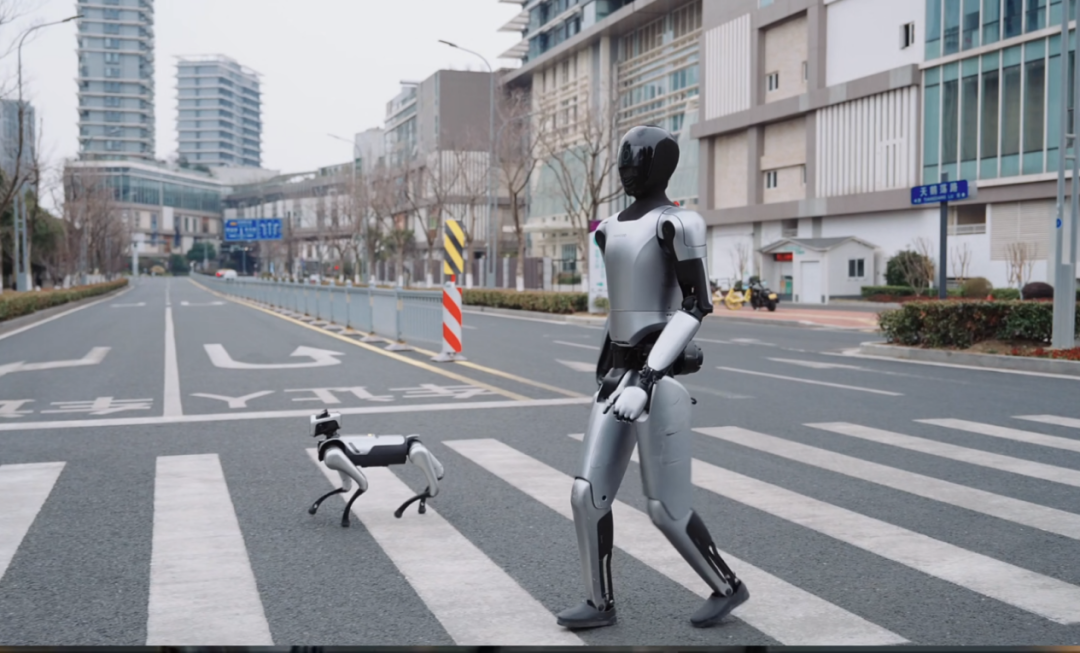
Currently, XiaoMai has entered partner factories to undertake tasks such as parts loading and unloading, material handling, and product inspection. After optimizing its technology, its success rate and efficiency in the high-speed digital motor loading and unloading process have been significantly improved.
Magic Atom also announced the launch of the "Thousand Scenes Co-creation Plan," aiming to expand to 1,000 partner companies and create 1,000 application scenarios for humanoid robots. Wu Changzheng, President of Magic Atom, revealed the mass production plan for humanoid robots, predicting that 400 humanoid robots will enter industrial and commercial scenarios this year.
Foreign technology companies are also sparing no effort. On March 21, Tesla CEO Elon Musk announced that Tesla's humanoid robot Optimus will enter the trial production stage this year, with plans to produce 5,000 units. Components for 10,000 to 12,000 units have been ordered, targeting a production volume of 50,000 units by 2026.
Musk predicts that when production reaches 1 million units, the unit price of Optimus is expected to drop to $20,000, significantly promoting its commercial application. He believes that the future market size for humanoid robots may far exceed that of the automotive market.
Goldman Sachs predicts that by 2035, the global market size for humanoid robots will exceed $154 billion, surpassing traditional industries like automobiles and 3C to become a new industrial frontier. By 2035, global shipments of humanoid robots will reach 1.4 million units, with a market size of approximately $38 billion.
The domestic market also holds immense potential. According to the "Humanoid Robot Industry Research Report," it is estimated that the market size for humanoid robots in China will reach 10.471 billion yuan by 2026 and is expected to reach 119.246 billion yuan by 2030.
2025 is considered the "first year of mass production" for humanoid robots, with rapid advancements in AI large models accelerating their commercialization. However, the entire industry is still in its nascent stages, facing short-term challenges such as cost, scenario adaptation, and technological maturity. For example, Unitree Robotics' H1 robot, priced at 650,000 yuan, has seen a surge in pre-orders, but the delivery cycle is relatively long, and application scenarios remain limited, exposing a mismatch between production capacity and demand.
Morgan Stanley predicts that the five years after 2025 will be the "climbing period" for the industry, with true large-scale explosions potentially occurring after 2030 when technology matures and costs decrease, enabling humanoid robots to witness widespread application.
-Business Show-01
From Conceptual Prototype to Technological Iteration
The development of humanoid robots has a long history, dating back to the 15th century during Leonardo da Vinci's era, with his sketches of mechanical knights considered the prototype of early humanoid robot concepts. However, the modern development of humanoid robots actually began in the first half of the 20th century in the United States, with in-depth research truly commencing in the 1960s.
In 1967, Waseda University's development of WABOT-1 marked a milestone in humanoid robot history. Standing approximately 2 meters tall and weighing 160 kilograms, this robot was equipped with a limb control system, visual system, and speech interaction system. It had anthropomorphic hands and legs, totaling 26 joints throughout its body, two cameras on its chest, and tactile sensors on its hands. Although its mobility was comparable to that of a one-year-old infant, it represented the first time humans achieved bipedal walking for a full-size humanoid robot, earning its main creator, Ichiro Kato, the title of "father of humanoid robots."
By 2000, Honda had launched the humanoid robot ASIMO, capable of walking at speeds of 0-6 km/h, predicting the next action in real-time, and shifting its center of gravity in advance. It could also shake hands, wave, and even dance to music. Over the years, ASIMO underwent several iterations, with the final generation possessing comprehensive abilities such as obstacle avoidance using sensors, preset actions, acting on commands based on human voices and gestures, and basic memory and recognition. In December 2001, the National University of Defense Technology independently developed China's first humanoid robot, marking a significant step forward in this field for our country.
In 2009, Boston Dynamics introduced the Atlas robot, with its prototype publicly unveiled in July 2013. The initial Atlas used a hydraulic drive and electro-hydraulic hybrid mode, incorporating technologies like optical radar, laser rangefinders, and TOF depth sensors. After continuous optimization, today's Atlas utilizes RGB cameras and TOF depth sensors to obtain environmental information, employs Model Predictive Controller (MPC) technology to track movements, adjust force, and posture, and can perform high-difficulty actions like jumping, rolling, jogging, and triple jumps in complex obstacle environments with the help of 28 hydraulic actuators.
On October 1, 2022, Tesla officially unveiled the prototype of its humanoid robot Optimus, demonstrating its application in scenarios such as carrying boxes, watering plants, and moving metal bars in automotive factories. Optimus can not only precisely control the force of its movements and navigate but also perform end-to-end movement manipulation based on human action examples.
Its uniqueness lies in sharing the neural network (NN) with Tesla's vehicles and installing the same Full Self-Driving (FSD) system, which includes multiple sensors, computers, artificial intelligence technologies, and algorithms, as well as navigation and map data, to assist vehicles and robots in perception, decision-making, and action in various environments, potentially reducing the cost of humanoid robots.
Entering 2025, on February 22, the upgraded version of the world's first "city-level" humanoid robot simulation training platform was launched in Shanghai. This platform successfully achieved algorithms for rapid and stable standing on generalizable and arbitrary terrains, completed path closed-loop verification in experimental environments, and was opened to global developers, supporting the "one-click generation" function for complex scenarios, providing robust technical support and a development environment for humanoid robot research and development.
Taking Magic Atom's XiaoMai as an example, in industrial scenarios, XiaoMai undertakes tasks like parts loading and unloading, material handling, and product inspection, addressing issues of high labor costs, high labor intensity, and numerous human errors in industrial production. Through precise visual recognition, pose estimation, and efficient trajectory planning, XiaoMai enhances production efficiency and product quality.
In terms of expansion into commercial and household scenarios, XiaoMai possesses emotional interaction capabilities and can naturally communicate with humans through voice and actions, potentially solving the issues of insufficient commercial service manpower and lack of family companionship.
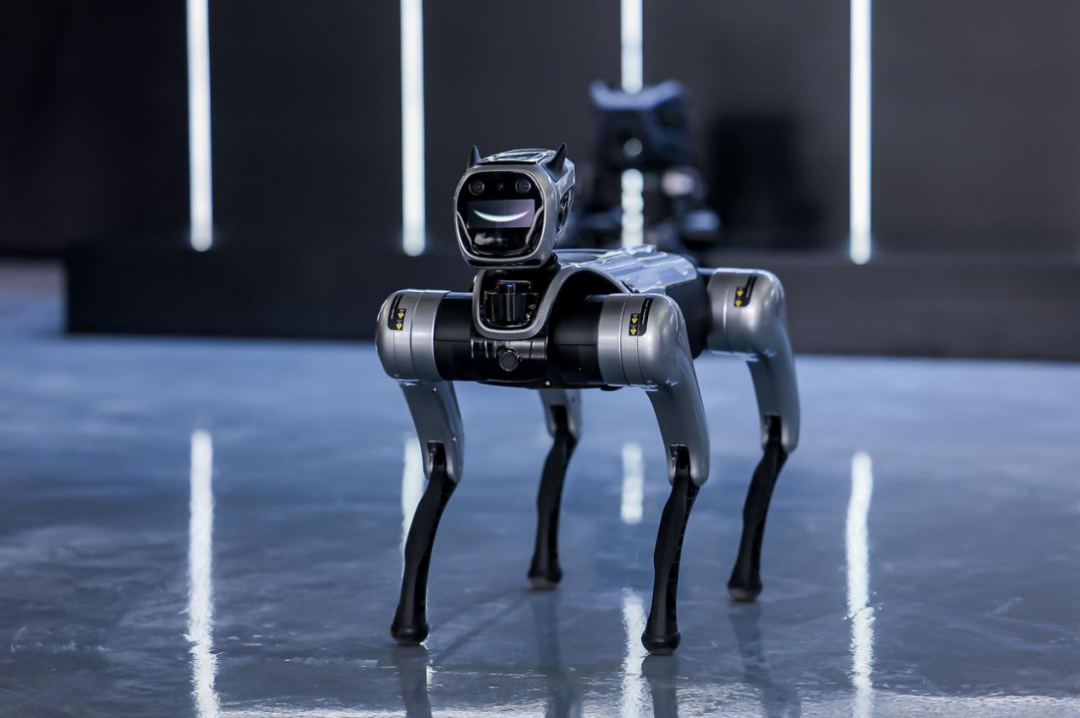
In the "Light Guide 001" project, Magic Atom's quadruped robot leverages its multimodal interaction capabilities to provide travel assistance and life services for visually impaired individuals. In complex outdoor environments, the quadruped robot can adapt to different terrains, perceive the environment in real-time, guide visually impaired individuals to move safely, and provide voice reminders. In scenarios such as shopping at convenience stores and hailing taxis, the quadruped robot assists visually impaired individuals in completing operations through visual-language collaborative interaction, enhancing their convenience in daily life.
-Business Show-02
Breaking the Commercialization Impasse
Although the market prospect for humanoid robots is promising, commercialization faces numerous challenges.
Technologically, humanoid robots still face bottlenecks in achieving human-level dexterity and intelligence. In complex environments, there is a gap between the robot's rapid decision-making, precise motion control, and long-term stable operation reliability and actual needs.
With current technological levels, when robots encounter unexpected situations, they often struggle to make rapid and accurate response decisions within a very short period, a limitation that significantly restricts their widespread application and promotion in more complex scenarios.
Foreign technology company Boston Dynamics is a leader in the field of motion control technology. Its Atlas robot, leveraging advanced Model Predictive Controller (MPC) technology, is like a flexible athlete, capable of easily performing high-difficulty actions like jumping, rolling, jogging, and triple jumps in obstacle-laden complex environments.
The high cost is undoubtedly a major obstacle on the path to the commercialization and popularization of humanoid robots. At this stage, the costs of humanoid robots are generally high across all aspects, from research and development to production and maintenance. In terms of hardware, high-performance sensors, advanced drive systems, and high-quality materials significantly increase the manufacturing cost of robots.
Taking Tesla's Optimus as an example, although its high-precision sensors and advanced power drive system endow the robot with powerful performance, they also make it difficult to effectively reduce hardware costs. At the software level, complex algorithm development and continuous optimization require significant investments in funds and professional manpower, further increasing the cost burden.
Even if Musk predicts that the unit price will drop to $20,000 with mass production, it is still unaffordable for ordinary consumers and most small and medium-sized enterprises, restricting market penetration.
Market acceptance also needs improvement. Consumers are concerned about the safety risks of robots entering their lives, and enterprises will consider issues like compatibility with existing workflows, employee acceptance, and job replacement when introducing robots, all of which hinder the market promotion of humanoid robots.
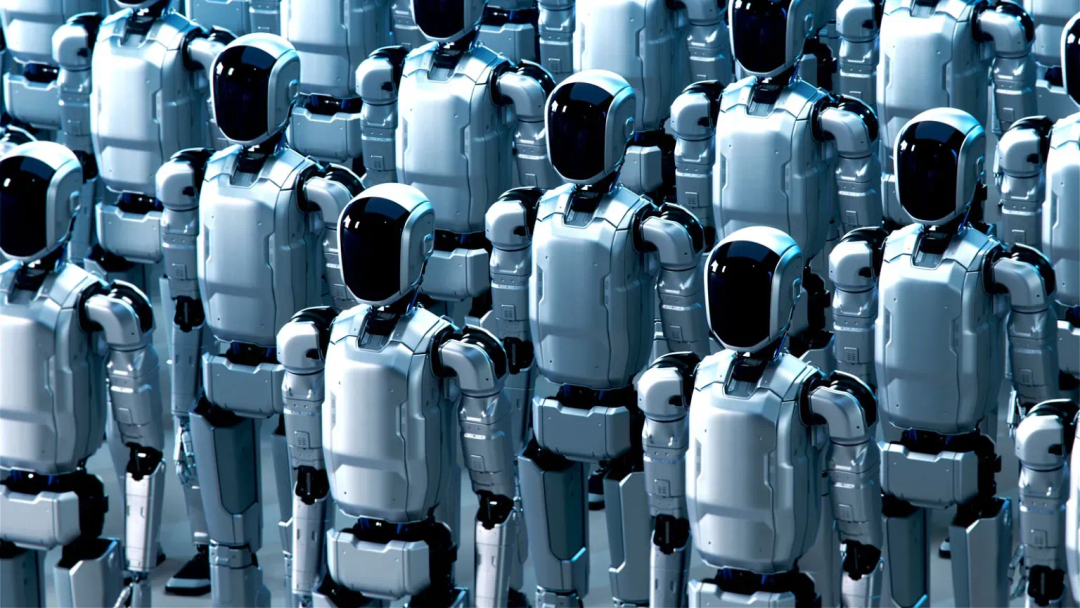
From the perspective of domestic and foreign technology companies and market landscapes, foreign companies like Tesla and Boston Dynamics are present. Tesla relies on battery technology and autonomous driving algorithms from the electric vehicle sector to support humanoid robot research and development; Boston Dynamics is renowned for its advanced robot dynamics control technology, and its humanoid robots exhibit excellent mobility.
Many domestic enterprises are also deploying in the field of humanoid robots. For example, Magic Atom has achieved certain results in research and development and application, with initial applications in the industrial, commercial, and special services sectors.
Currently, the global humanoid robot market is in its nascent stages and has not yet formed a stable landscape. Companies are striving to gain a favorable position in future competition through technological innovation, cost control, and market cultivation.
Although the field of humanoid robots holds broad prospects, it is still in its early stages, with a stable and mature market landscape yet to be formed. The road to commercialization is long. [End]

